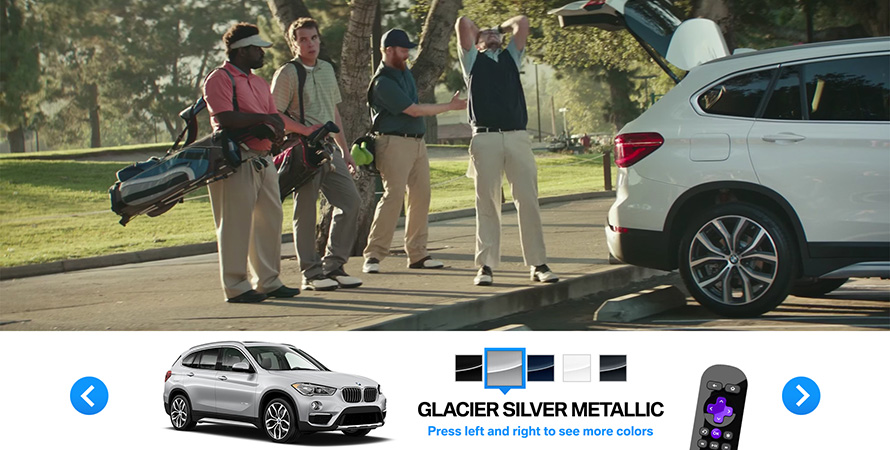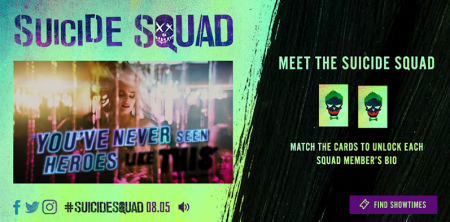Finding ways to keep viewers engaged
Technology around TV keeps advancing, and advertisers are desperate to keep up with changing viewer behaviors. If people walk out of the room when ads appear on traditional TV, will the rise in streaming platforms change their habits?
Companies like BrightLine and true[X] have tried to solve the problem by creating targeted and interactive ads for viewers to engage with instead of ignore.
BrightLine creates interactive and targeted advertising for a cable streaming audience who use Apple TV, Roku devices, Amazon Fire TV, and other smart TV options; it has a major partnership with Hulu that was announced at last year’s NewFronts presentations.
Targeted ads might focus on a viewer’s location and weather conditions to advertise for sunscreen if it’s been sunny lately; if the forecast calls for humidity, an ad for a frizz control shampoo might pop up.
BrightLine also created ads for BMW for certain smart TVs. While the spot plays, viewers are given the option to toggle between different colors of a BMW X1 in the lower third of the screen.

BrightLine
Increasingly, advertisers are opting for those types of ads to add value to a viewer’s experience instead of detracting or distracting from it.
“Every ad can be made smarter without any friction or extra effort by an agency or a network,” said Jacqueline Corbelli, the CEO and co-founder of BrightLine. “We’re helping television advertisers turn the page and join the digital platform experience in full force.”
According to Corbelli, interactive ads get a 6 percent interaction or click-through rate, whereas most digital ads get a 0.0175 percent rate.
“The interactive approach to the market is a win for the viewer, which becomes a win for the advertisers, which is a win for the networks,” she said.
“The rise of interactive ads is related to the increase in understanding of how important real attention from a consumer is,” said Ed Davis, the chief product officer of true[x]. “As long as the brand respects the fact that consumers are willing to give their attention, the entire experience will be better.”
“Whether you’re a streaming service or in the traditional cable business, delivering relevant ads is key. Viewers don’t hate ads, they hate irrelevancy.”-Peter Naylor, svp of ad sales for Hulu
Hulu partners with true[X], BrightLine and Innovid to create interactive and engaging ad experiences for viewers on digital platforms and connected streaming devices.
Peter Naylor, svp of ad sales for Hulu, feels strongly about the viewer’s experience and how advertisements are a part of that.
“We know that most people love TV, so why shouldn’t they love their advertising experience too?” said Naylor. “A viewer’s advertising experience should be about personalization and choice, the same way they see choice around what they watch and how they watch it.”
“A majority of our subscribers have opted for the limited ad-load subscription,” he said. “In fact, our research shows that 93 percent of viewers have some level of receptivity to ads, with 36 percent saying they are highly receptive.”
Naylor also says a lighter and highly relevant ad load is essential for that experience to go well.
“One of the great promises of data informed targeting isn’t just increased efficiency for the marketer, but a more relevant experience for the viewer,” he said. “Whether you’re a streaming service or in the traditional cable business, delivering relevant ads is key. Viewers don’t hate ads, they hate irrelevancy.”
For BrightLine, interactive ads will become the industry norm as viewers either cut or shave the cord connecting them to cable companies. While some novelty element may be behind the engagement rates of ads like BMW’s color options, Corbelli is confident that the industry has only scratched the surface of what targetable and scalable data can do.

true[X] and OMG@WB
For true[X] and Davis, they want clients to recognize and respect the relationship between the ad spots and the viewers.
“Publishers of content are getting valued properly, and viewers are being respected for their time, which means brands are seeing significantly better performance,” said Davis.
While these targeted and interactive ads may seem to encroach on a viewer’s privacy by being able to locate where they live, Corbelli assures that targeting and privacy concerns are different issues. These ads are targeted to consumers based on their IP address, which can tell you the location of a person or what their viewing habits are, without sharing their name or other specifics with advertisers.
“As we’ve seen with Google and YouTube, no system was in place to hold digital advertisers accountable,” said Corbelli. “TV advertisers have been working with this content-buying model well before the digital world began to fuse with it.”
“It’s a 99 percent viewability situation, where you know your ad will be seen,” she said.
–
This article first appeared in www.adweek.com
Seeking to build and grow your brand using the force of consumer insight, strategic foresight, creative disruption and technology prowess? Talk to us at +9714 3867728 or mail: info@groupisd.com or visit www.groupisd.com

